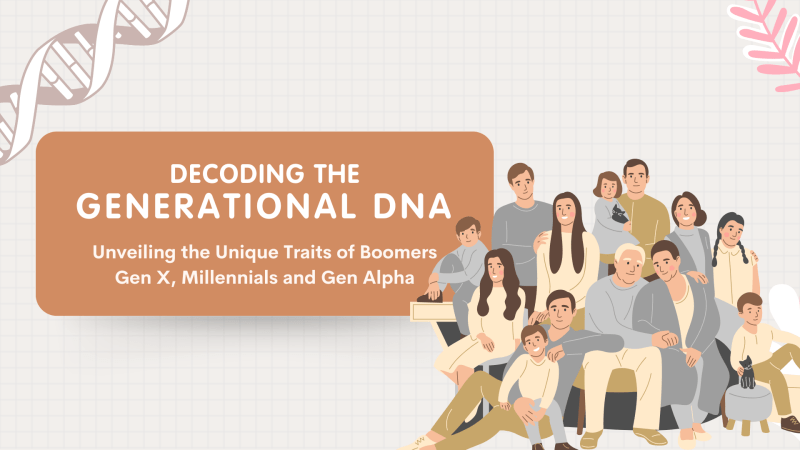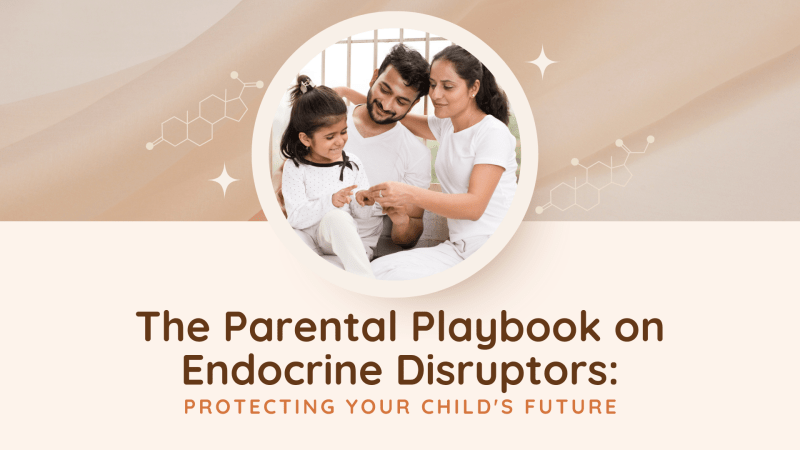The Biggest Difference Between Schools In the 90s and Today
There is one thing consistent across generations and it comes to light whenever folks from two or more generations interact: The Generation Gap. But why does the gap keep reinventing itself with every new generation? Something to ponder about, right? It probably concerns the kind of education each generation is exposed to and that is what we will explore today in this blog.
The differences between schools in the 1990s and today are vast and multifaceted which include advanced teaching methodology, technology, norms and policy frameworks. In this blog, we will explore the key differences across various headers, highlighting how these changes have reshaped the educational experience for students, teachers and parents.

Advancements in Tech
1990s:
- Limited Technology: In the 1990s, technological devices in schools were minimal. Computers were rare, and those available were often low-configuration devices. Internet access, if present, was slow, unreliable, and usually limited to a single machine.
- Manual Processes: Most administrative tasks were done manually, attendance was recorded in registers, and report cards were handwritten or typed out using typewriters.
- Teaching Tools: Overhead projectors, chalkboards, and textbooks were the primary teaching tools. Multimedia resources were scarce, and educational content was mostly text-based.
Today:
- Digital Integration: Modern schools are equipped with far more advanced technology. Classrooms often have state-of-the-art interactive whiteboards, tablet devices, and high-speed internet connections. Learning management systems (LMS) like Google Classroom and Blackboard facilitate online learning, assignments, and feedback.
- Administrative Efficiency: Attendance, grading, assessments, and communication with parents/guardians are managed through digital platforms, improving efficiency and accuracy.
- Innovative Teaching Tools: Teachers use multimedia resources, including educational apps, online videos, and virtual reality experiences, to create engaging lessons. The use of technology fosters interactive and personalised learning experiences.
As a result of this dynamic shift in technological access, information is relayed across the classroom more attentively and engagingly, resulting in students learning more effectively.

Teaching Methods and Curriculum
1990s:
- Traditional Pedagogy: Teaching methods were largely traditional, with a strong emphasis on rote learning (which is essentially learning through repetition) and memorization. The curriculum was usually rigid, focusing on core subjects like math, science, and literature.
- Teacher-Centred: The classroom dynamic was largely teacher-centred, with the teacher directing the instructional process and students expected to passively absorb knowledge with few opportunities for active engagement or participation. This method inhibits student engagement while discouraging critical thinking and collaborative learning.
- Limited Differentiation: There was minimal emphasis on differentiated instruction, and students with different learning needs often did not receive tailored support. Some students struggled to keep up with the conventional curriculum due to a lack of individualised attention, hindering their academic development and overall engagement.
Today:
- Progressive Pedagogy: Modern teaching methods emphasise critical thinking, problem-solving and creativity. Project-based learning, flipped classrooms, and inquiry-based learning are common.
- Student-Centered: Classrooms have become more student-oriented, promoting active participation and collaboration. Teachers act as facilitators rather than dictators, guiding students in their learning journeys.
- Differentiated Instruction: There is a greater focus on differentiated instruction, catering to diverse learning styles and needs. Special education programs and individualized learning plans are more prevalent and robust.
The introduction of new approaches to how teaching is done has brought an inclusive atmosphere to the classroom. This allows students with different capacities to excel. When teachers become facilitators of learning, students are given the upper hand to effectively hone their soft skills in presentations and group discussions, and be open to interaction among themselves. It gets the GenZ kids going in their wavelength, by letting them handle their learning, under the guidance of teachers as and when necessary.

Assessment and Evaluation
1990s:
- Standardised Testing: Standardised tests were the primary method of assessment, and these tests often emphasised memorization and regurgitation of facts.
- Limited Feedback: Feedback was usually limited to grades on report cards, with little emphasis on formative assessments that could guide a student’s improvement. There was also little room to discuss individually the students' performance with the parents.
- Periodic Evaluation: Students were typically evaluated at set intervals, such as midterms and finals, with less frequent formative assessments.
Today:
- Comprehensive Assessment: Modern assessment strategies include a mix of formative and summative assessments. Projects, presentations, and peer reviews complement traditional tests to ensure a more dynamic approach to grading.
- Continuous Feedback: Continuous feedback mechanisms help students understand their progress and areas for improvement. Digital platforms allow teachers to provide instant feedback, allowing the students to work on improvement areas immediately.
- Holistic Evaluation: Evaluation now considers a broader range of skills, including critical thinking, creativity, collaboration, and emotional intelligence, and is no longer restricted to the grades you receive on a marks card.
While they retain the traditional spirit of testing to assess learning effectiveness, the new modes of comprehensive assessments and feedback help train students with a checkpoint based approach. Holistic evaluation, which considers critical thinking and creativity, gives students the space to express themselves via projects, presentations, assignments, etc. It keeps the students engaged and more in control of their learning better in comparison with the age-old modes of rote learning & terminal examinations.

Role of Parents and Community
1990s:
- Limited Parental Involvement: The communication between parents and teachers was sporadic. Parental involvement was often limited to attending parent-teacher conferences and helping with homework.
- Community Engagement: Schools had some level of community involvement, but it was generally limited to local events and fundraisers.
Today:
- Active Parental Involvement: Parents are more actively involved in their children's education. Digital communication tools, like emails and school portals, keep parents informed and engaged more regularly on their child’s performance at school.
- Community Integration: Schools have stronger ties with the community. Partnerships with local businesses, organizations, and higher education institutions enrich the educational experience through internships, mentorships, and real-world projects.
Much like the classrooms of today, homes have also become spaces for interactive learning. Parents are given the space to involve themselves much more in the educational space. This paves the way for the well-rounded development of teenagers. After all, the purpose of education is to shape an individual into someone intelligent, empathetic, and strong in terms of approaching challenges in life.

Classroom Environment and Student Well-being
1990s:
- Rigid Environment: Classrooms were more rigid, with a focus on maintaining discipline and order. There was less emphasis on creating a nurturing and supportive environment that would help students learn effectively and with more engagement.
- Limited Support Services: Support services for student well-being, such as counselling and mental health resources, were less prevalent and, in some cases often ignored.
Today:
- Flexible Environment: Modern classrooms are designed to be flexible and conducive to collaboration. The physical arrangement of furniture often encourages group work and interaction. This type of setup allowed students to feel more at ease letting them absorb information more effectively.
- Enhanced Support Services: There is a greater focus on student well-being, with schools providing comprehensive support services, including counseling, mental health resources, and wellness programs.
The collaborative atmosphere of classrooms gives students a glimpse of the world after their education. Gone are the days when workplaces were restricted to the desks of each employee. The fluid nature of collaboration found in classrooms today reflects the conference rooms and brainstorming lobbies in organizations. They are encouraged to practice the same kind of collaboration in their classrooms, to prepare for finding solutions to the challenges of tomorrow as a team of experts.
Extracurricular Activities and Holistic Development
1990s:
- Limited Extracurricular Options: Extracurricular activities were available but often limited in scope. Sports and a few clubs (like theatre or debate) were common, but options were fewer.
- Focus on Academics: There was a stronger focus on academic achievement, with extracurricular activities seen as secondary.
Today:
- Wide Range of Activities: Modern schools offer a diverse range of extracurricular activities, including various sports, arts, technology clubs, and community service opportunities. These activities support holistic development.
- Balanced Approach: There is a balanced approach to education, recognizing the importance of extracurricular activities in developing well-rounded individuals. Schools encourage students to pursue interests beyond academics.
The differences between schools in the 1990s and today are profound and reflective of broader societal changes. Technological advancements have revolutionised how we teach and learn, making education more interactive and accessible. Modern teaching methods and curricula focus on critical thinking, creativity, and individual growth, moving away from rote learning. Assessment strategies have evolved to provide more comprehensive and continuous feedback, supporting student development. Now you know why there is a persistent generation gap between generations. Mind you, we only compared the current system with the ones in the 1990s.

As we continue to progress, the challenge will be to ensure that these advancements are accessible to all students, regardless of their economic background or social circumstances. The journey of education is one of continuous improvement, and the strides made since the 1990s provide a strong foundation for the future. By embracing these changes and continuing to innovate, we can create an educational system that equips every student with the skills and knowledge they need to thrive in an ever-changing world.




